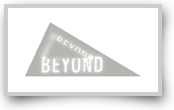The 3rd Project
Exhibition of The 4th Guangzhou Triennial
Dimensions — Analysis of Three Art Cases

Foreword
As an important way of observation and expression for the
Chinese, Chinese ink painting has become the unique product through the process
of planting the traditional culture into a real context. And therefore the
contemporary ink painting that develops under a new cultural context is gaining
more and more attention in the art world. Since the writing program and norm of
aesthetics that Chinese ink painting lives on have rooted in the Chinese
cultural tradition, and the limitation of ink language and media, it is hard for
the Chinese ink painting to extend a new artistic practice internally. Therefore
it has never gained a proper opportunity to enter the contemporary progress.
Whenever the contemporary ink is mentioned, the traditional ink painting will be
reminded. From a doubt towards the traditional ink painting was raised and then
a break through for the rule of ink painting undertook in the 1970s, the rebel
to the tradition and reference from the West in the 1980s, till the series of
experiments of ink painting in 1990s, the development of ink painting still
bears a conflict with the “tradition”. In other words, the contemporary ink
painting is in fact a cultural phenomenon of deconstructing and reconstructing
the new dimension of ink painting.
The contemporary ink painters find a new breach in
contemporary culture theory through deconstructing, transforming, and
rearranging of the traditional language system and adopting other experiences.
This exhibition shows the individual personalities from a universal artistic
phenomenon through an analysis of cases, so that a more accurate direction for
the research of contemporary ink painting could be found. The works of Zuo
Zhengyao gain a strong trait of ink expression, combination of up-right
individuals, forming an overwhelming power. He utilizes the traditional ink
language to create a pattern of ink painting which is full of conception.
Through a presentation of femininity issue, the colonialism, the issues of
identity and right for speaking, and even the urban consumption, consumer
culture and other social as well as cultural issuers are mirrored inside his
works. Therefore the irrationality of the internal society is unveiled, and an
attempt to find a legal way for an improvement is carried out. Compared with
Zuo, Liu Qinghe disassembles the traditional ink one step further in his works.
He consciously
puts the focus on the reality and social issues. The
artist starts from the peculiarity of the ink material, and depicts the sense of
loss in man, the absurdity and helplessness in life through a stroke image of
ink painting. The solemn themes in the works of Zuo and Liu are replaced by
various
absurd matters in the works of Wu Yi. A languishing joy
is reflected in the simple and elegant pictures. The poetic elegance in
traditional ink painting is easily and directly shifted to a fun of grace. The
changes showed in these three art cases look simple, but underneath is the rich
knowledge of tradition and understanding of the current cultural situation from
the artists.
In recent years the researches for Chinese ink painting
and all kinds of exhibitions have vied with each other. Though some did produce
cutting-edge value and criticalness, most of them emerged for a profit in the
market. As three typical art cases, the three artists showed in this exhibition
have all worked hard for the transition of traditional painting through various
aspects. They have built new dimensions for the Chinese ink painting that fits
the current cultural context as they deconstruct and break the value and rules
of the traditional ink painting.
April, 2012



